Kitchen Lighting — Ideas & Guide
Are you concerned about providing enough illumination in your kitchen, but don’t know where to start? This complete guide will help shed some light on kitchen lighting ideas and how décor style and lighting rules are combined- to give you the ultimate results. It all starts with one little idea that pops, providing your kitchen with more ideal coverage that you’ll need anytime you enter your kitchen.
The Importance of Kitchen Lighting
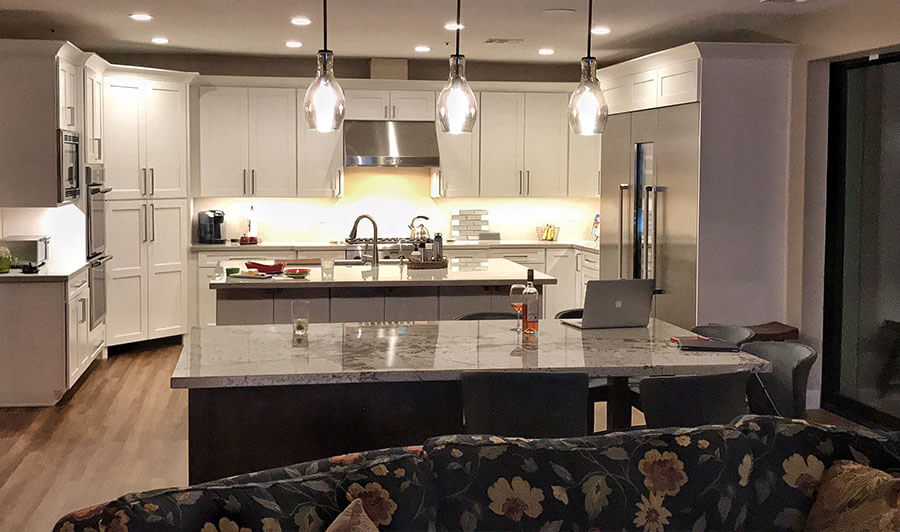
Your kitchen is without a doubt the heart of your home, so it only makes sense that good lighting is vital for you to enjoy cooking, eating, or just hanging out with friends and family. But one aspect that many people forget is that lighting must fit the décor of your kitchen not only in terms of workability but matches the mood you’re trying to achieve. It can also be summarized that the right lighting will accent the overall design of your kitchen.
Just like you might see in a movie, lighting helps illuminate a movie set but is never actually seen or directly shown. In other words, the only light you’re allowed to see is what a director wants you to see. This is where the rules of lighting take over and are intentionally placed in your kitchen to illuminate sections (at a vantage point) that you don’t directly see. Then again, some light fixtures are intentionally placed so you see the light, and where it’s going.
These aren’t complicated tricks but are actually part of lighting rules, and how these rules will apply to the interior of your kitchen. This would almost certainly apply to the décor and interior design, thus creating a visual impact that adds more to what your kitchen already features. Just like any great photo portrait, lighting can add more depth, mood, and focus to how your kitchen works intentionally.
There is a function on top of everything that you do in your kitchen, yet with so many new add-ons that can be achieved with kitchen lighting, it can be filled with plenty of lighting effects, mood lighting, and accent lights when you’re planning the best lighting for a kitchen.
Types of Lighting: The Rules
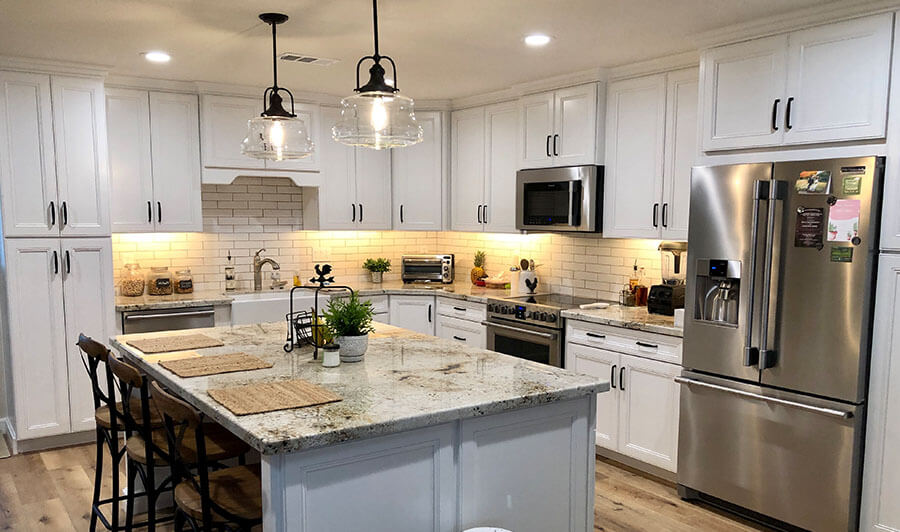
As a central focus, there are three main types of lighting that your kitchen can use. The essential kitchen lighting design rules of thumb include ambient lighting, task lighting, and accent lighting. Each of these will give you a select type of light which is chosen around specific points of your kitchen. All of them can also be combined to create the ultimate effect, and that’s what interior kitchen designers call layered lighting.
When done properly, it completes a professional and attractive lighting design.
Ambient lighting
This is the bread and butter of any kitchen and is mainly used to help you see where you are going in your kitchen. It’s not as bright as task lighting and is intended to illuminate floors and walkway areas within and around your kitchen. This lighting is mostly intended for the safety and is usually coming directly from the ceiling. It’s not uncommon for recessed and flush-mounted lights, but not limited to chandeliers and pendant lights.
As long as your kitchen starts with this element first, you’ve completed the first layer of general lighting. If you’re using lighting over kitchen islands, decorative hanging lamps including pendant lights make an eating area more comfy and relaxing.
Task lighting
This is the workhorse light that also serves as a spotlight to bring focus to very specific spots in your kitchen. Food prep areas, cooking zones, and countertop lighting all provide ample amounts of light used for cooking food, preparing meals, and performing kitchen duties. Task lights will also help illuminate kitchen cabinets so when cabinets are opened, it’s easy to see what you’re looking for.
This can be achieved by placing lighting from one side of your kitchen that’s angled to hit the surface of the cabinets or lighting is hidden inside of each cabinet. This is when recessed and puck lights come in most handy, but not excluding LED strip lighting. Don’t forget that kitchen island chandelier ideas are perfect for task lighting which further frame larger island counter space.
Accent lighting
Perhaps the most decorative lighting comes from accent lights which are only seen from select angles. These are mainly used for decorative touches that are also meant for safety. This will be perfect for toe-kick lights under standing cabinets, internal cabinet lights, and special feature lights. These kinds of lights add pizzazz to any finished kitchen but most importantly give added special effect features to items you absolutely want to highlight.
When you’re looking to impress, accent lighting is a little trickier to hide but well worth the extra mile for making your kitchen stand out with impressive results. These lights can further be more dramatic by using lights that are controlled with dimmers or color-changing abilities that help set the mood and ambiance.
Types of Lighting Fixtures
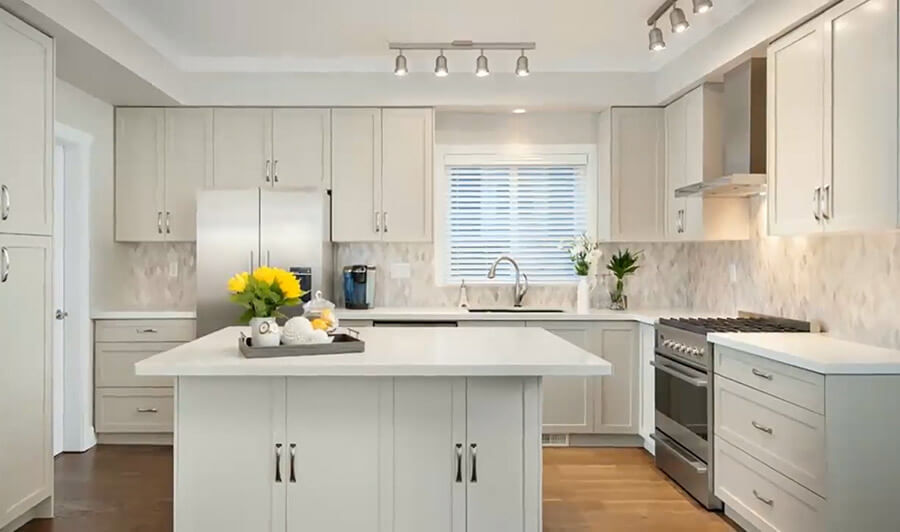
In the category that can cover ambient and task lighting, there are selected light fixtures that are recommended for these jobs. They don’t have anything to do with lighting effects or accent lighting but may lend to the aspect of kitchen illumination that plays a big role in creating the look based on the theme of your kitchen design. Here is how to light a kitchen using these three essentials.
Recessed lights
Simply as it sounds, recessed lights are lights that are sunken into a surface with little or no decorative frame around them. These lights are great if you intend to use downlights for general lighting or versions that can be adjusted so they can be angled. It’s better to place recessed lights in locations that aren’t easily seen from selective sightlines, which adds to the effect part of how these lights are typically used.
In modern kitchens, recessed lights are often part of the décor and then are placed in strategic locations so they stand out making a kitchen look stark or futuristic.
Surface lights
These are lights that have a decorative covering and are meant to be part of the kitchen décor. Surface lights are mounted to the ceiling and their location is meant to beautify and complement areas of your kitchen you want to light up. Though the styles are all different, all surface-mounted lights can provide direct downward light or be adjustable to some capacity. These lights are also important for general lighting but are not limited to accent lights too.
Pendant lights
Whenever you want to make a statement with any light that hangs from the ceiling, pendant lights steal the show. These are meant to be seen and should be part of a visual appeal for your kitchen. They provide a decorative style of lighting that is perfect for work station lighting, kitchen island lights, and ambient light uses. You might hear that pendant lighting has a rule of three’- however, this is subjective when it comes to the fixture itself.
Track lights
Track lights are not only surface mounted to a ceiling and can alternatively attach to walls if desired. The design allows spots of light to flood an area or become spotlights to selected points of focus. Track lights can be visually pleasing to look at or carefully placed so they are partially hidden from sight. The point is that track lights allow you to change the look of your kitchen by adjusting the angle or light distance to get different lighting results.
Ways to Use Light for Various Effects
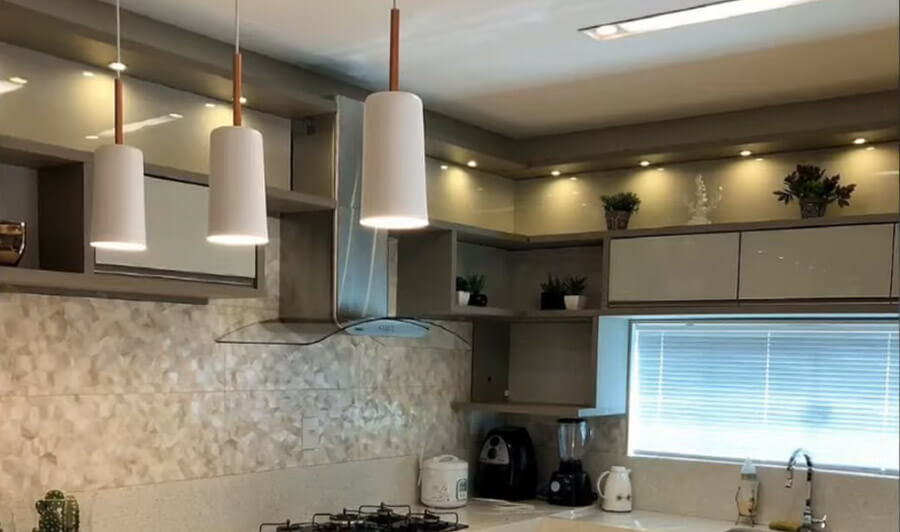
Considering that your kitchen is essentially a canvas that can be painted with light, this is where lighting effects create accents and mood-enhancing qualities. You can use many lighting tricks as you like to achieve these results, but many of the newest innovations are mainly from using LED lighting technology. Since LED lights use such low levels of electricity, they are easy to install and often have separate controls for dimming and color control.’
LED strip lights
Strip lights can be installed in very tight spaces where you can’t place regular light fixtures. They can go underneath standing cabinets, along an underside edge, or under hanging cabinets in the same manner. There’s no wrong way to use them to full effect. These also look incredible along the top running edge of hanging cabinets or atop decorative molding along a ceiling edge. If your strip lights can fit under or into a nook, they will create an artistic and creative lighting effect.
Strip lights are made so they can further be connected creating a seemingly endless light strip anywhere you like. It gives excellent safety for toe-kick lighting and accent lighting alike. Inside kitchen cabinets, these can be hidden easier than most puck lights with better illumination for darkened cabinets that need internal lighting. As for lighting ideas for kitchen islands, strip lights can easily help your island appear trendy and attractive.
LED puck lights
Normally, puck lights work well underneath hanging kitchen cabinets but are also helpful for giving light inside standing cabinets that need interior lighting likewise. This will be helpful for island lights ideas for putting inside cabinets and accent lighting under island shelves and even countertop overhangs. Puck lights are practically as easy to install as strip lighting but there is a noticeable difference when puck lights are used as opposed to strip lights.
Various Types of Lighting per Décor Style
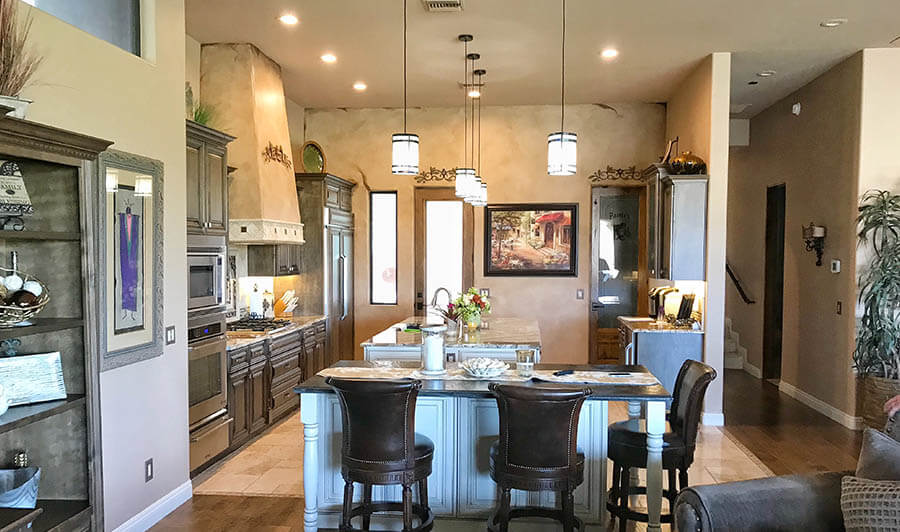
Your kitchen style and décor will need to match the type of lighting fixture that’s installed. This will make it more difficult to disguise certain types of lighting when the style of your kitchen is matching a period or themed design. Here are some tips that will help to choose the correct kind of light for select kitchen designs or island lighting fixtures that blend in better.
Farmhouse/rustic kitchen lighting
Whenever the theme of a bygone era is recreated, lighting fixtures cannot have any kind of modern appearance. By using ambient light fixtures, their housings should have natural brass or copper surfaces. Whether or not they are aged-looking is a matter of preference, but fixtures should match the period. While any kind of accent lighting should be carefully hidden and disguised so these lights cannot be seen easily.
This means that spotlighting or creating accent lighting needs to be placed behind corners and blind spots in your kitchen where highlighted spots can be illuminated. Use overhead rustic beams or carefully placed recessed lights at angles to create impressive lighting. As for kitchen island pendant lights ideas, lantern-like chandeliers always work best. If you’re using island lights ideas in this theme, it’s always best to stick to warm candlelight hues.
Mid-century/retro kitchen lighting
What may be considered the 1950s, ’60s, or ’70s look, some kitchen styles had a distinct look for each decade. This gives more than enough reason to have large pendant lighting that ranges from round and space-age to downright overly-gaudy. There are plenty of downlights that include flush-mount lights and recessed can lights that match these styles. Remember the Sputnik chandeliers? Enter the mid-century modern themed kitchen. Period themed kitchens can benefit with modern day manufactured light fixtures than replicate the eras from which they were inspired.
Contemporary/modern kitchen lighting
To achieve the stark appearance of contemporary and modern kitchens, lighting for these kitchens will always include pendant lighting, recessed lighting, track lighting, and obviously accent lighting. Placing layers of light underneath shelving and cabinets help to create the long strips of horizontal lines this style is best known for. These two variants for kitchen design are among the few that are always sleek and clean looking.
The best lights over kitchen island designs that use this style can benefit from hanging pendant lights that are highly polished with plenty of chrome. With any modern kitchen island lighting ideas, bright white is recommended instead of warmer lighting to get the best effect.
For more on these popular kitchen décor styles, see our kitchen décor ideas page.
Finding a Lighting Designer
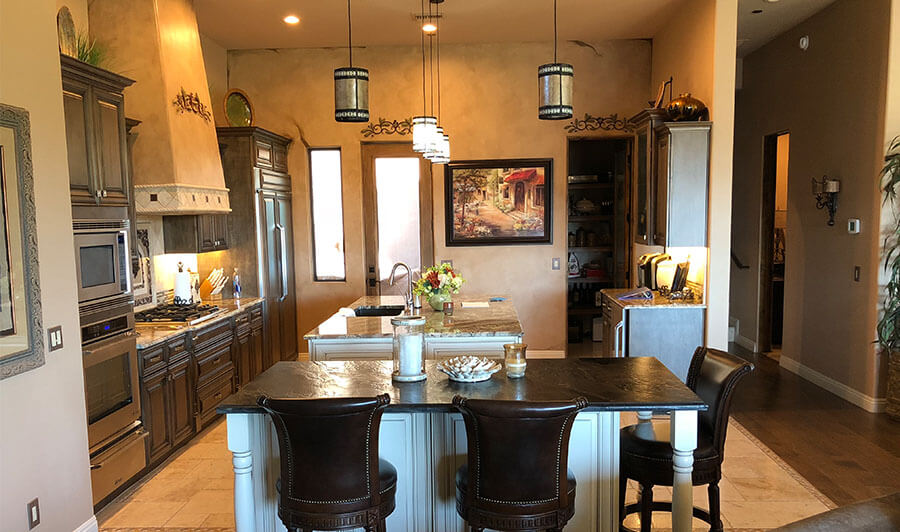
When searching for a kitchen lighting designer when planning kitchen lighting schemes, you’ll want to consult with a professional that understands how these rules come into play. Now, what types of lighting is best for a kitchen that you have, deserves plenty of thought. This will include kitchen island fixtures in addition to cabinet lighting. Using a variety of kitchen light design layers is always the best way to show off your newly designed kitchen in any case.
Kitchen Lighting Guide
What type of lighting should I use in my kitchen?
You should be using a combination of task lighting, ambient lighting, and accent lighting in your kitchen designs. Task lighting can include under-cabinet lighting and pendant lights over the kitchen island, while ambient lighting can come from overhead fixtures or recessed lighting. Accent lighting can include lighting for collectibles or cabinet lighting.
How many light fixtures should I have in my kitchen?
That really depends on the size and layout of the room, as well as your personal preferences. A good rule of thumb is to have a minimum of two overhead light fixtures, with additional fixtures for task lighting such as over an island or counter top as needed.
What are the most common types of kitchen lighting fixtures?
Pendant lights, under-cabinet lights, recessed lights, and track lights can all be used in designing a modern looking kitchen. Also, pay attention to the types of bulbs each light uses and try to use bulbs that are as close to natural light as possible. The newer LEDs also cost a lot less to run. So use them whenever possible.
What are the most popular materials for kitchen light fixtures?
Without a doubt, metal is the most popular. These types of fixtures come in all sizes and colors and something can be found to match any décor you could possibly imagine. In fact, since metal can be finished in a variety of ways, it’s even possible now to get textured or faux wood looking ones. You really can get just about anything you want.
How do I choose the right light fixtures for my kitchen?
You’re going to need to think about how much of an area each light needs to light up, and where you want the most intense light to be. For example, you’d want at least one spot light on a kitchen island, and one that is strong and concentrated light. While overall, you’d want two or more overhead lights to light up the entire kitchen while at the same time letting the light diffuse across the entire area.
What kind of light bulb should I use in my kitchen?
LED light bulbs are the most popular choice for kitchens, as they are energy-efficient and long-lasting. Other popular options include compact fluorescent bulbs and halogen bulbs although I really don’t recommend these as they make your kitchen feel “industrial”. Just try to mimic natural light and you’re already half way there.
How do I install kitchen lighting?
If you already have lights that are placed correctly, changing out the fixtures is simple and usually only requires a screwdriver. But for new construction or a new light, you’ll need to run electrical wiring, mount the fixtures, and connecting the wiring to a power source. It’s recommended to hire a licensed electrician for the installation, as it involves working with electrical circuits and fixtures that require proper installation for safety.

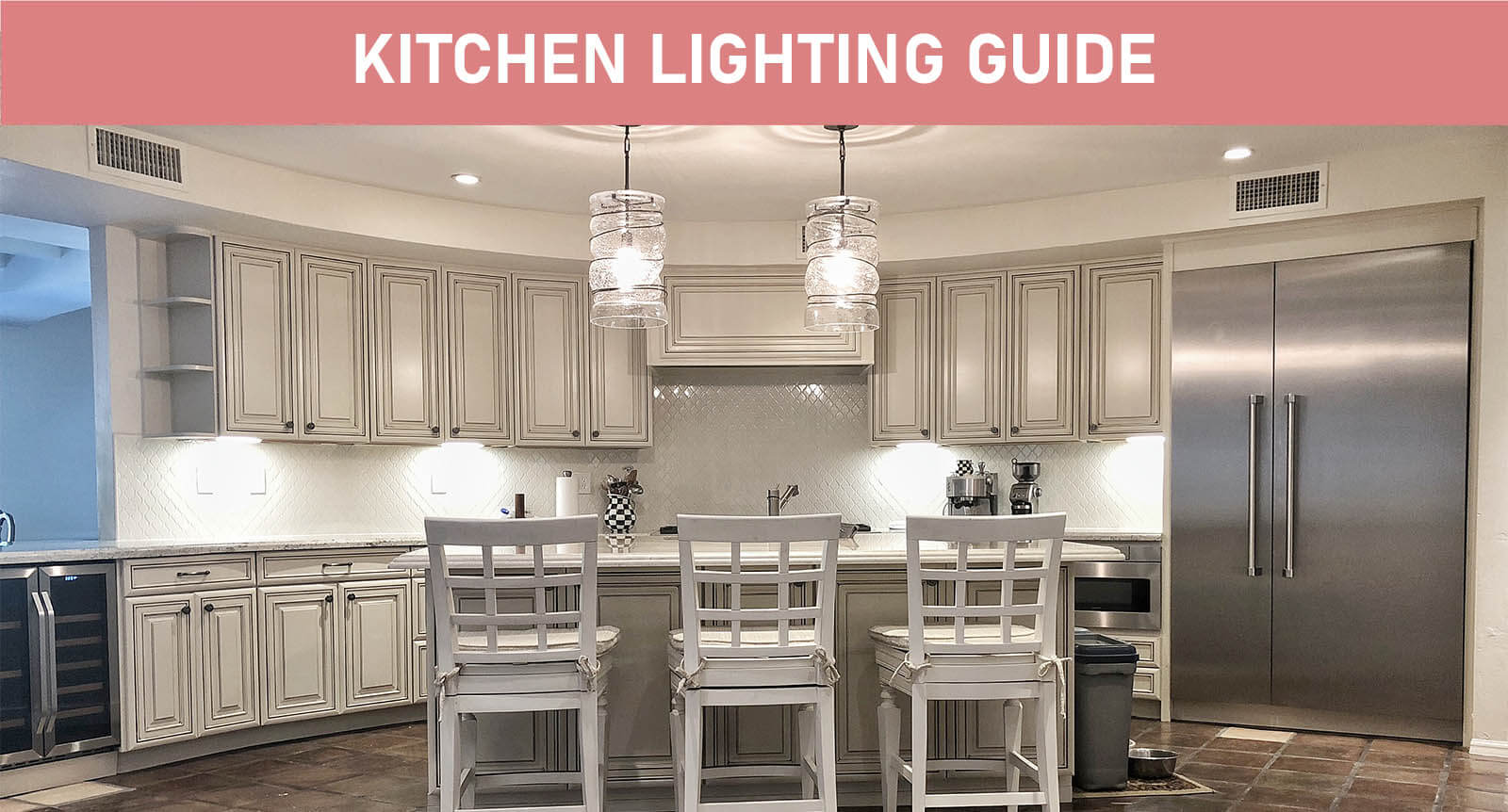
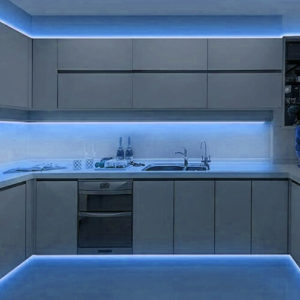
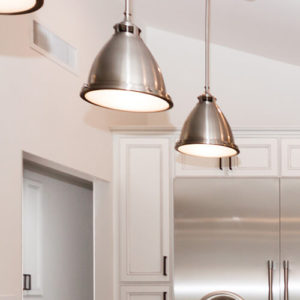
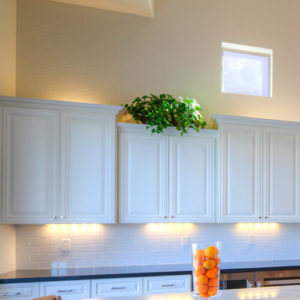
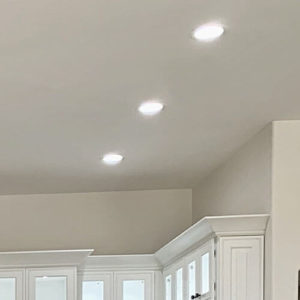
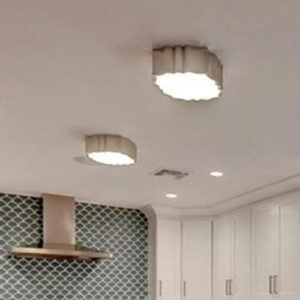
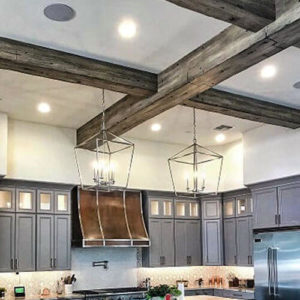
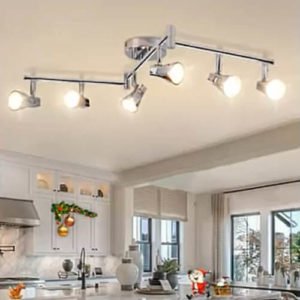
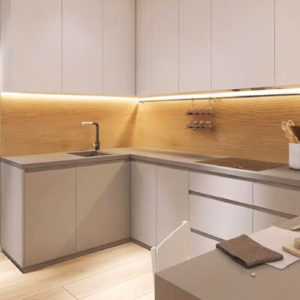
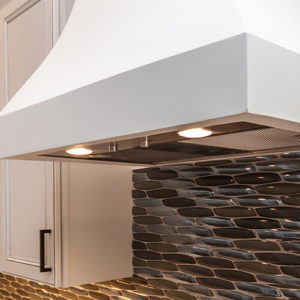
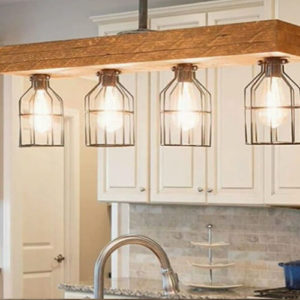
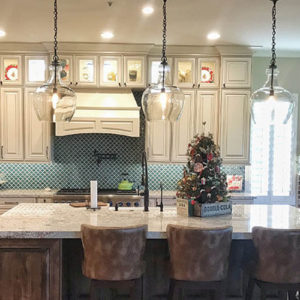
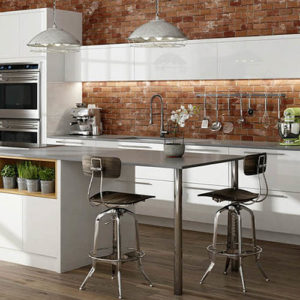
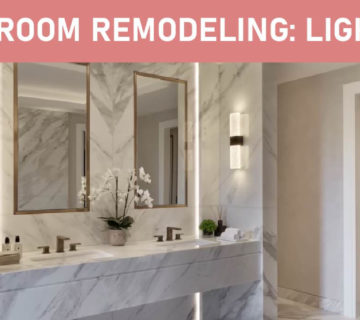
No comment